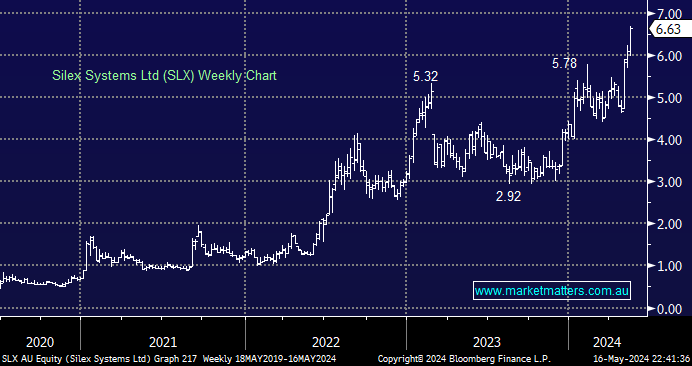The ban on Russian material is positive for SLX which has developed a new technology that promises to revolutionise the nuclear supply chain. It uses lasers to excite uranium atoms and then separate the U-235 and U-238. SLX successfully operated the technology at prototype scale (approx. 10% full scale) in 2013 at GLE’s Test Loop facility – SLX received a US$15m milestone payment from GLE at the time. GLE is now operating a second pilot plant in the US. The outcome from the pilot plant will be known in mid-2024, and Silex and Cameco have fast-tracked the development of the first commercial operation at Paducah to 2028.
- The passage of Biden’s bill also now triggers the release of US$2.7b in funding in the Nuclear Fuel Security Act, which is likely to be used to invest in domestic US uranium production, US enrichment capacity, and strategic uranium reserves. It is possible that SLX could benefit from this funding.
With the passing of Biden’s bill, the focus on the Cameco/Silex joint venture will increase. Cameco has an option to acquire an additional 26% interest in the JV to move to 75%/25% Cameco/Silex—we expect that option to be exercised before the move to commercial production. Such a move will provide a visible valuation marker for SLX as well as a large cash injection to fund the company’s share of the capex.
- We are bullish on SLX, seeing major upside from current levels – MM owns SLX in our Emerging Companies Portfolio.
















